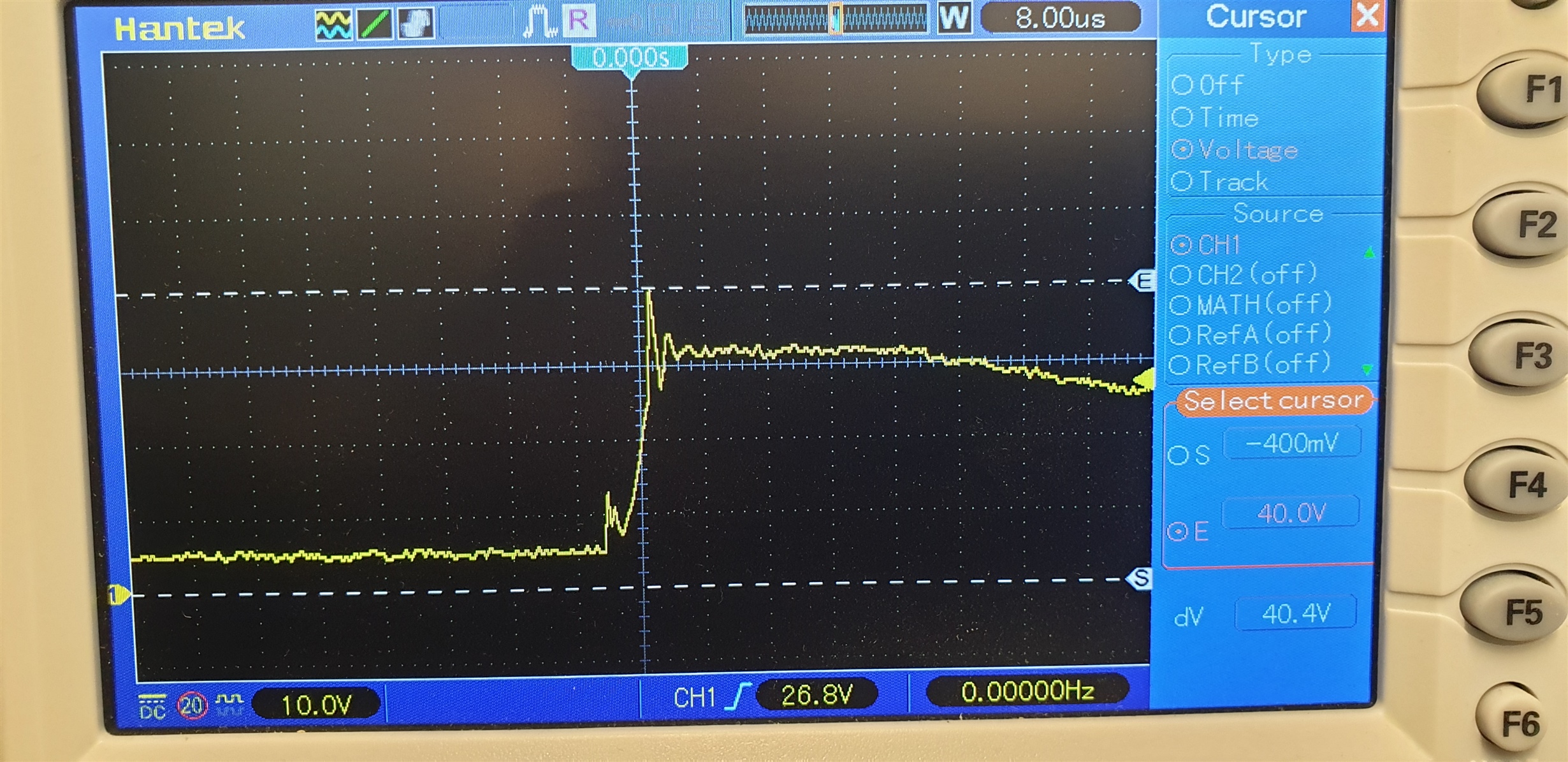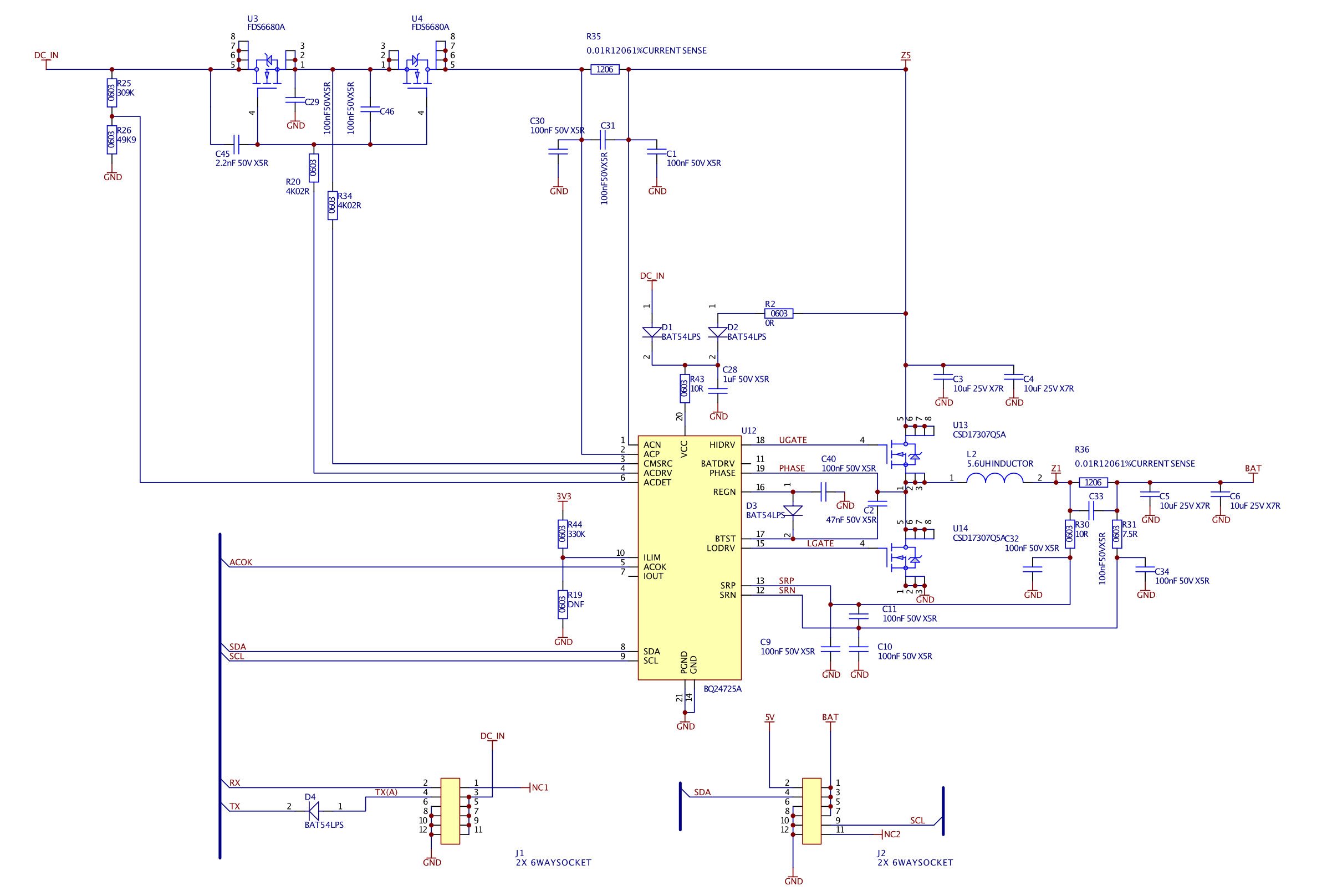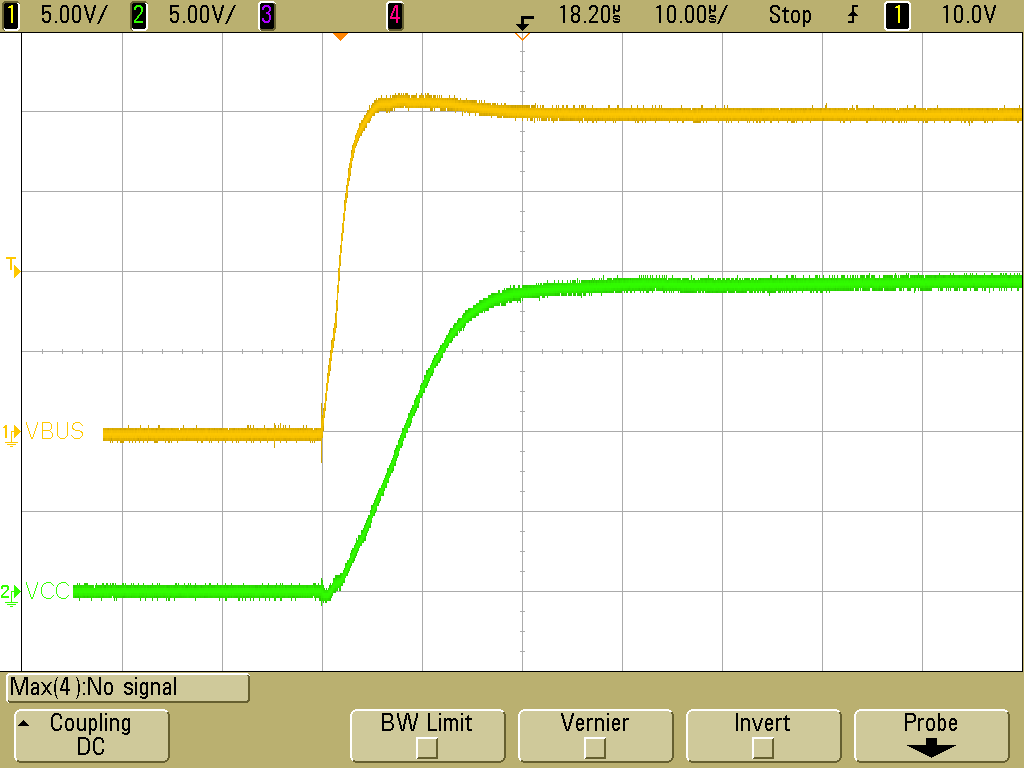We are developing a charger for a Li-Ion battery with the requirements:
Max charge voltage 16.8V
Max Charge Current 700mA
Min Bat volts 10.0V
Adapter Voltage 20V
Without a battery connected on connecting the adapter we observe up to 40V on the Vcc pin of the bq24725A.
I have tried adding a 2R and 2.2uF at the DC in witch helped reduce the ringing a little (5V perhaps).
I believe this is damaging the regulators uC as well as the charger chip such that when a battery is plugged in all four fets in the power path fail spectacularly.
However if the battery is plugged in first followed by the adapter the charger seems to work without smoke.
Should we be able to power the BQ24725A from the adapter without the battery connected?
This is our first off circuit, please note that Z5 or Vsys does not connect to anything.
Please could you advise as to how to prevent these 40V overshoots when plugging in the adapter without a battery.
Thanks
MG




